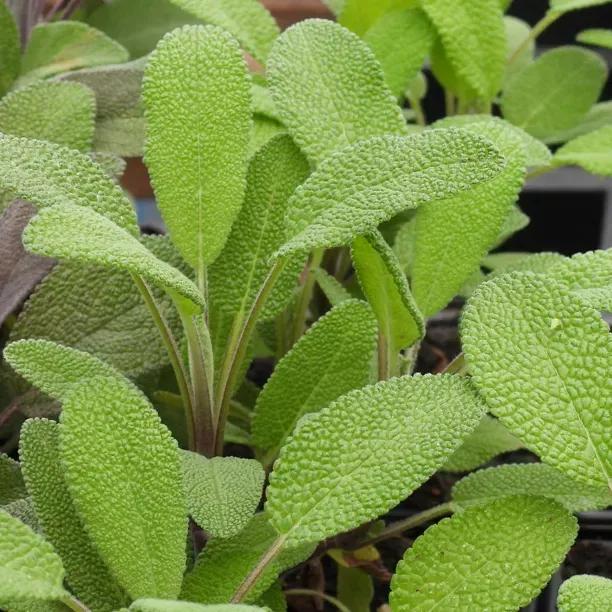Common Green Sage Plants
The details
Salvia officinalis
Pot Grown Herbs- Height: 60 cm
- Spread: 60 cm
- Colour: silver grey
- Flowers: mauve blue in summer
- Uses: culinary, medicinal
- Taste: highly aromatic
- Harvest: all year
- Storage: ideally not
- Spacing: 45 cm
- Life: hardy perennial
Recommended extras
Description
Salvia officinalis: Edible Sage Plants
Where would we be at Christmas without sage and onion stuffing to jolly along the turkey? But this vital work over, sage is a pivotal ingredient in many Italian dishes and is a great herb to cut through the fattiness of many meat or nut dishes; it also happens to be one of the most ornamental herbs around. As an evergreen it provides structure all year with its silvery green leaves that have a fine texture. The leaves are an oval shape with an immediately recognisable fragrance that is redolent of good cooking. As an added bonus the flowers are a desirable shade of mauve blue while extending down the shoot so that the whole bush looks as if it is covered in its snapdragony flowers.
Browse our range of UK grown vegetables and herbs.
Growing Sage
It thrives in pots. Just use a liquid feed after flowering and try not to overwater. Sage becomes woody eventually, so it is best replaced every five years or so.
Sage in Your Garden Design
Sage is so decorative that it need not be confined to a dedicated herb patch. Its graceful shape and intriguing leaves make a great foil for brightly coloured flowers in an herbaceous border, and its flowers are worthy of including in any cutting garden scheme. Pair sage flowers with sweetpeas, and you have a posy made in heaven, and smelling so too. Plant sage with rosemary and oregano, and you are already a long way down the road towards creating a Mediterranean garden that will be attractive throughout the year.
Did You Know?
Sage has long served people with its medicinal properties. Salvia is derived from the Latin salveo, I save, or heal. It is a top-notch remedy for colds when made into a tea, and gargling with an infusion of crushed sage and cider vinegar will soothe any throat infection. It is worth trying chewing it for mouth ulcers. Most medicinally, sage is the herb that adds the je ne sais quoi to Vermouth.
Added to any porky creation, sage aids digestion and lightens the dish: it has always been a traditional herb for preserving and flavouring sausages. It imparts its flavour well to oils and to vinegars, making good presents. Think of osso buco or sage butter with pumpkin and sage tempura


